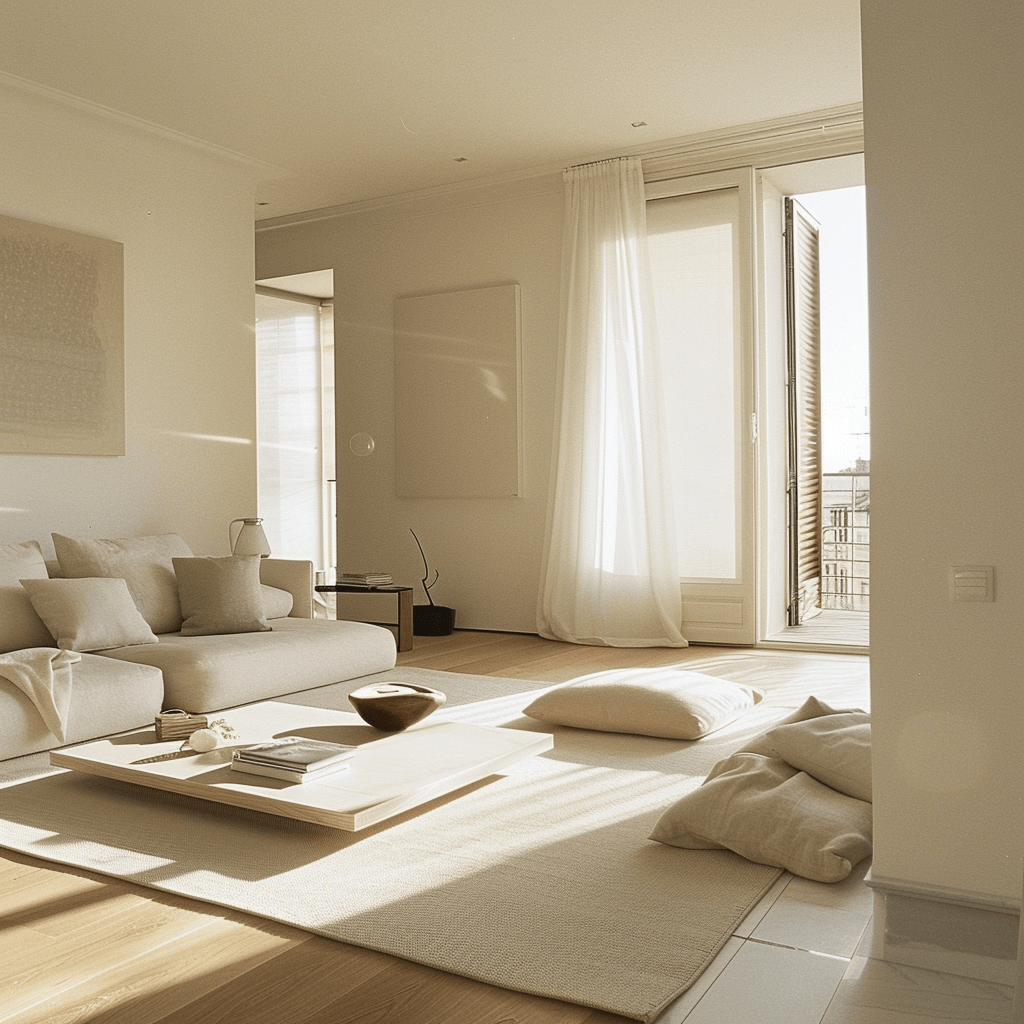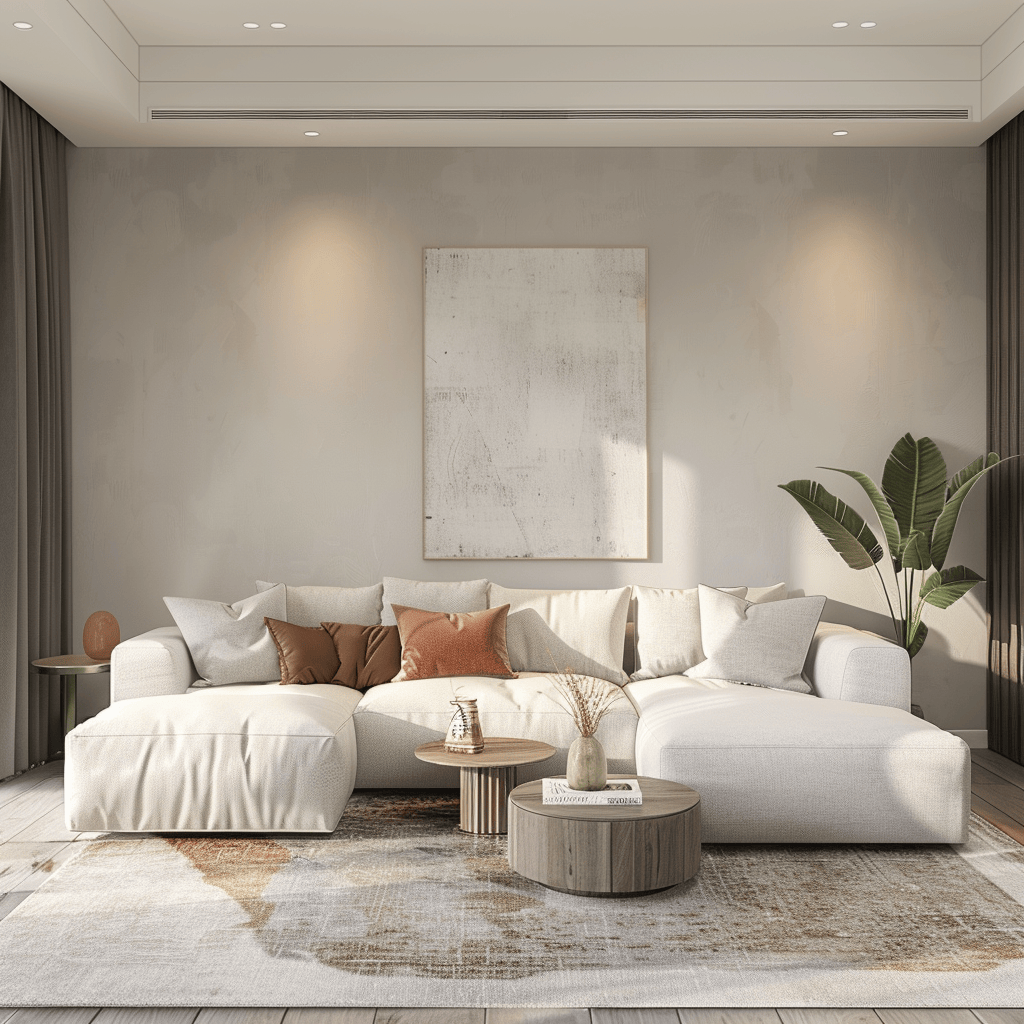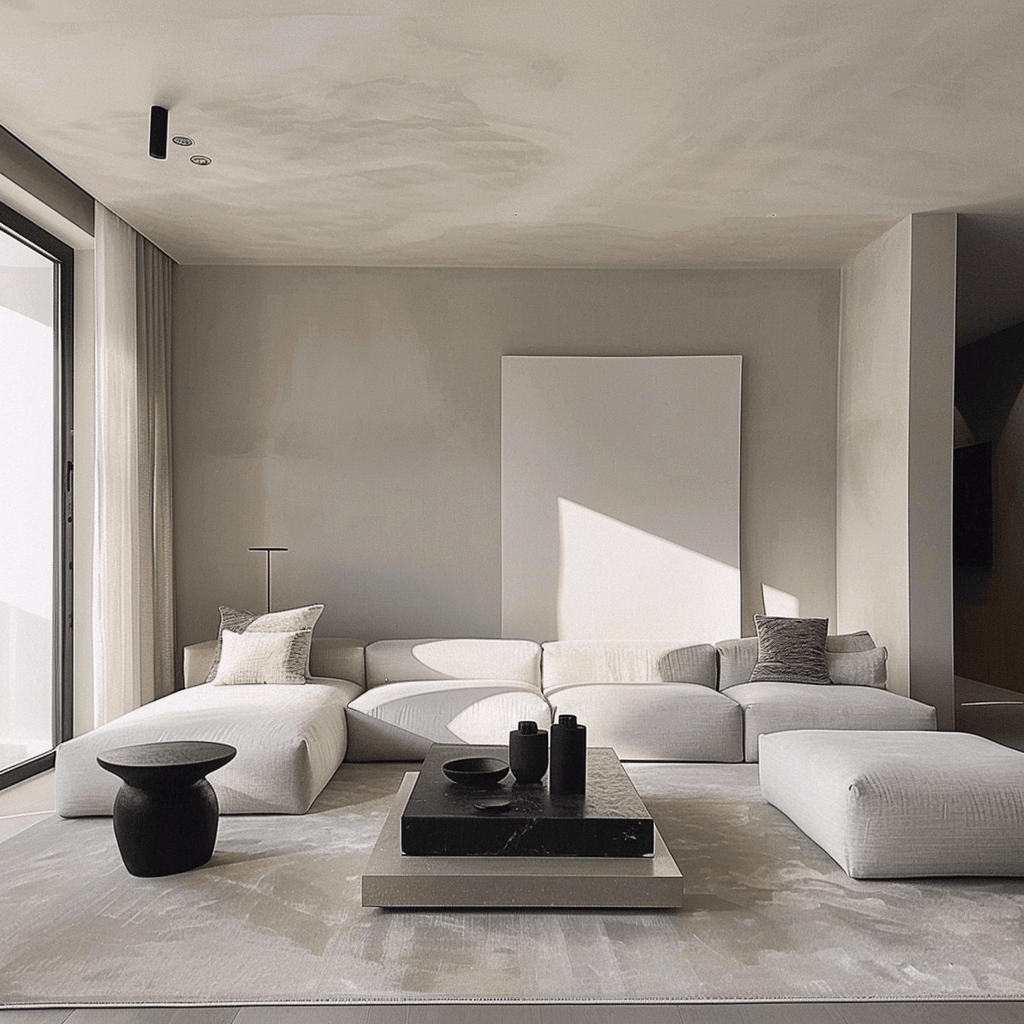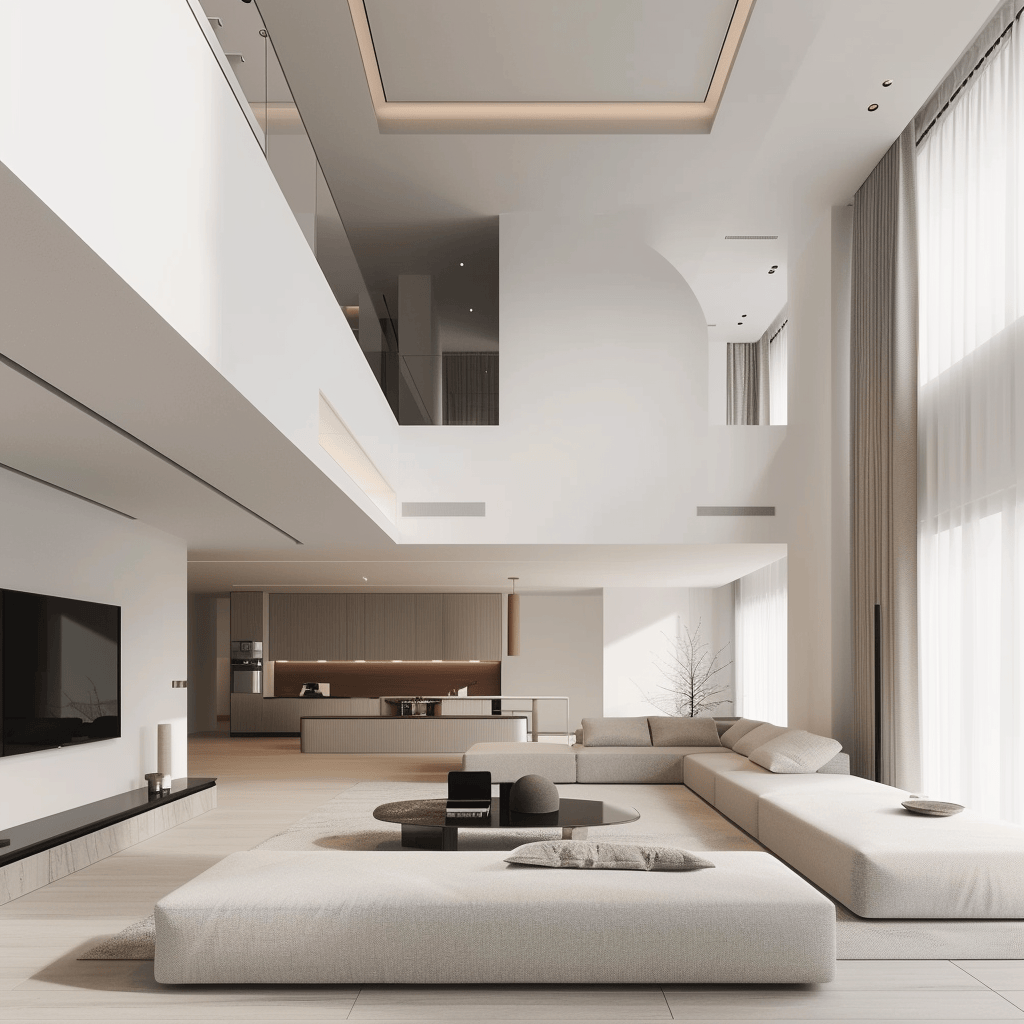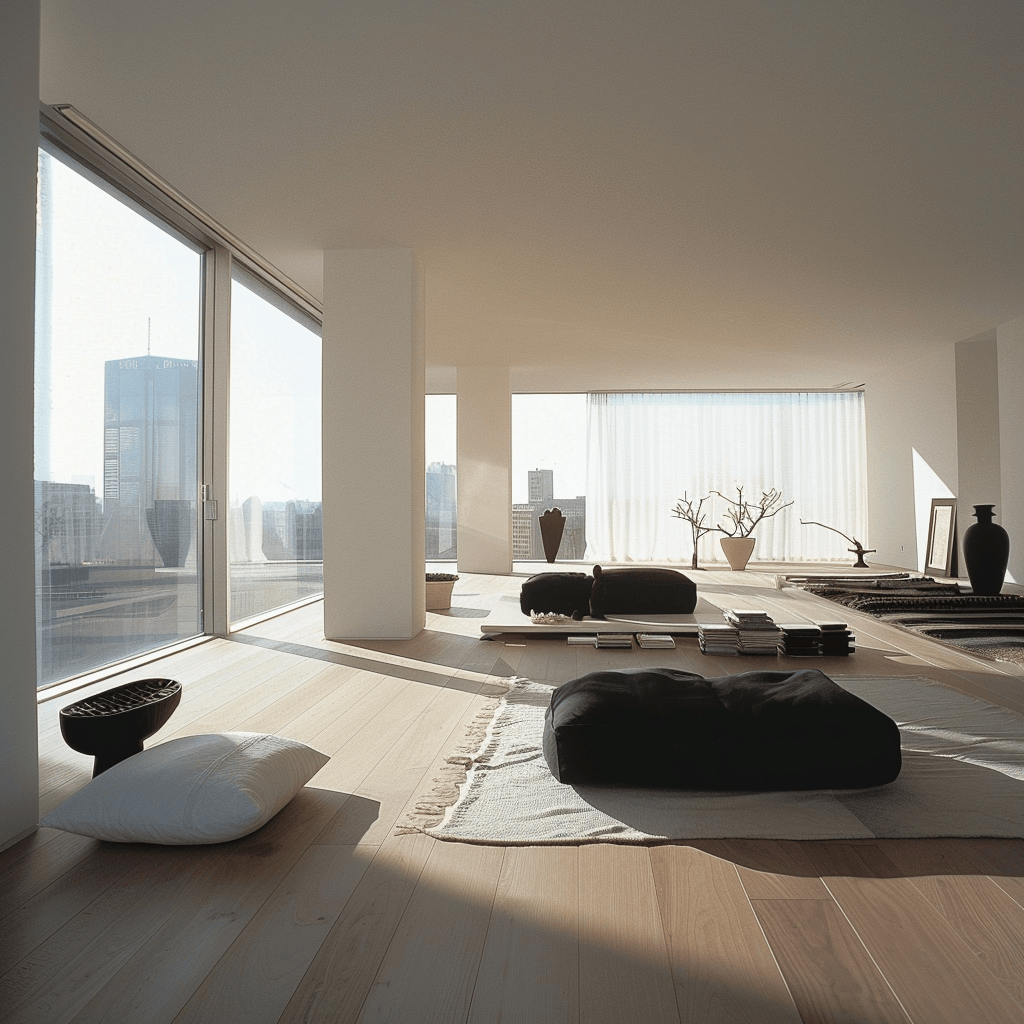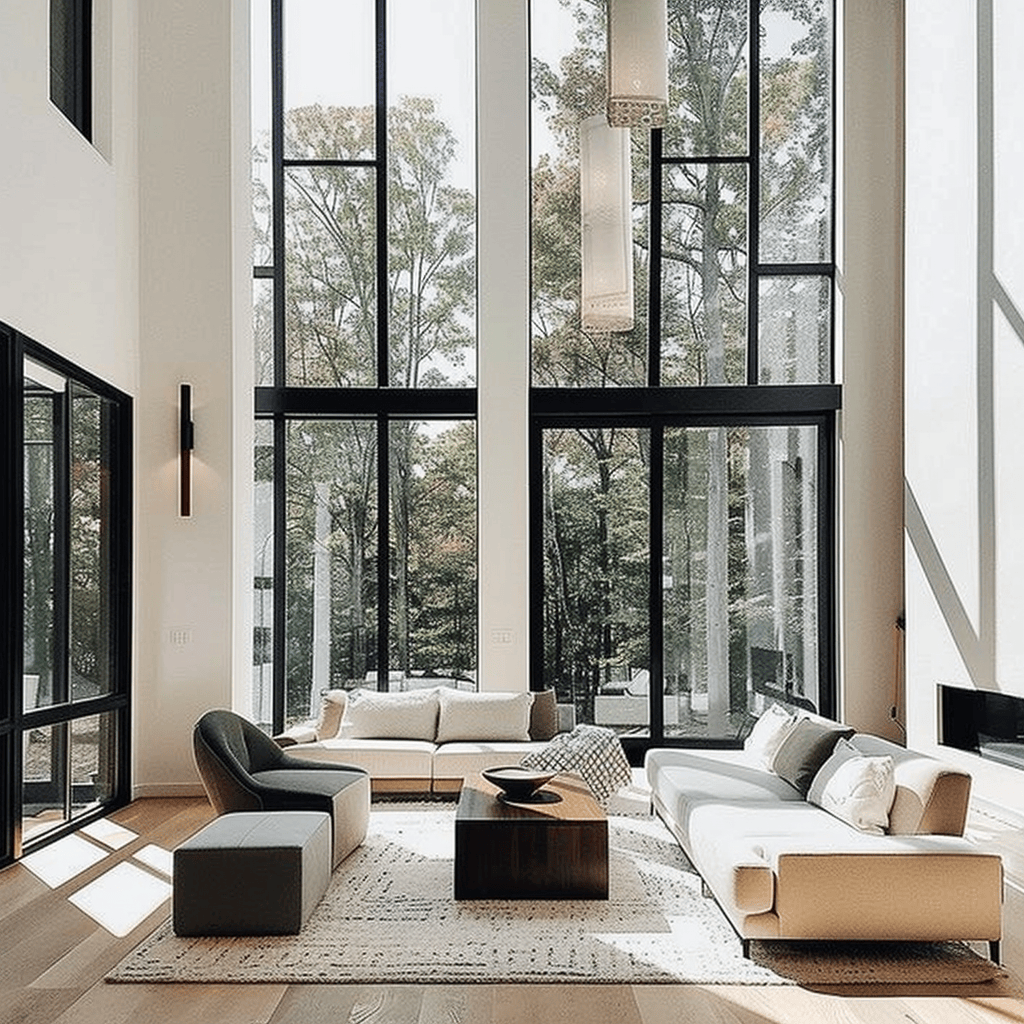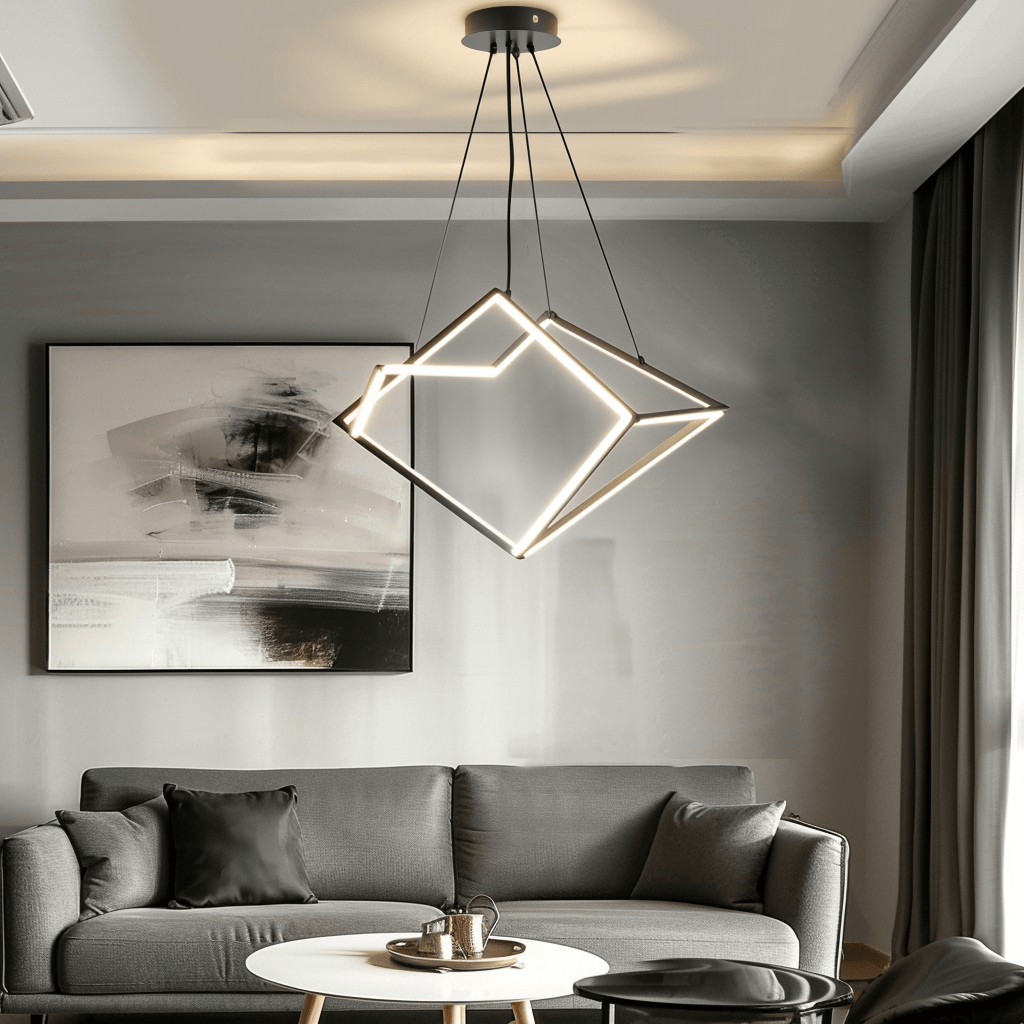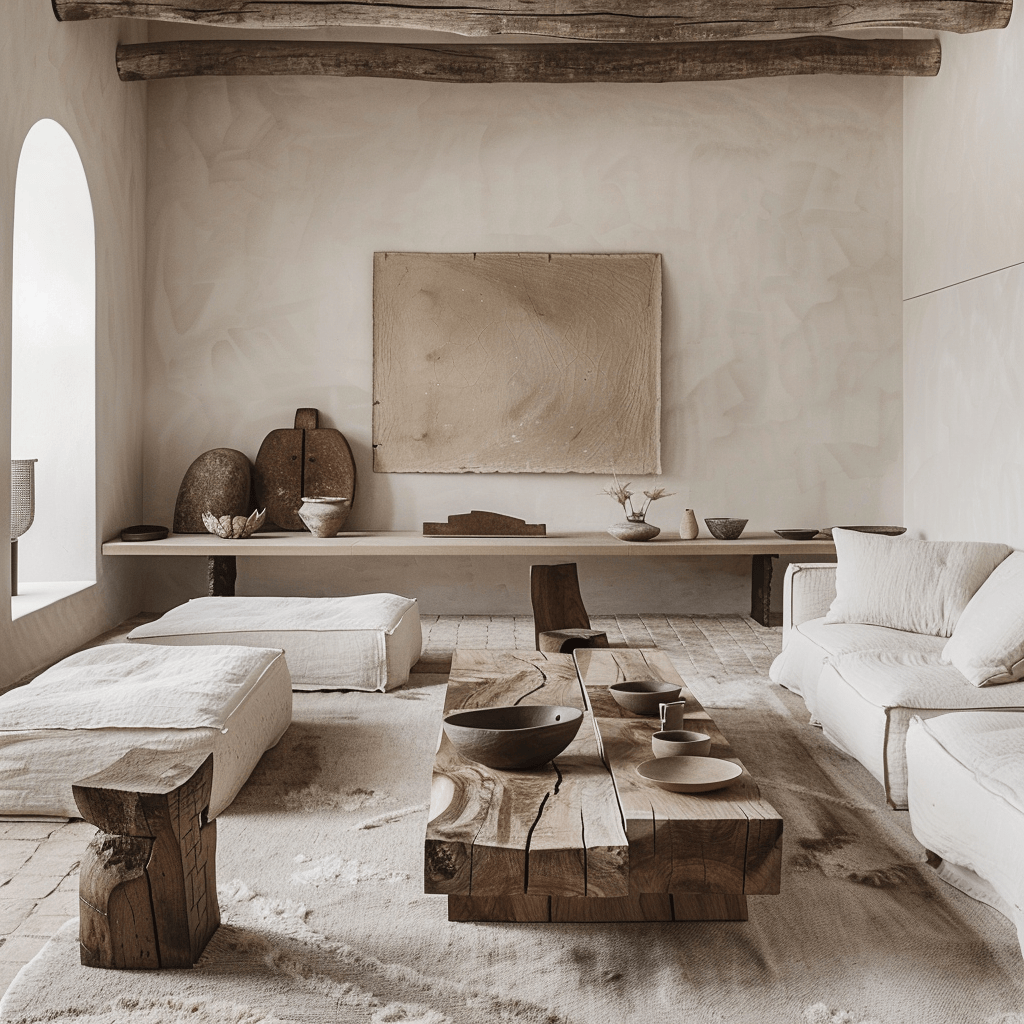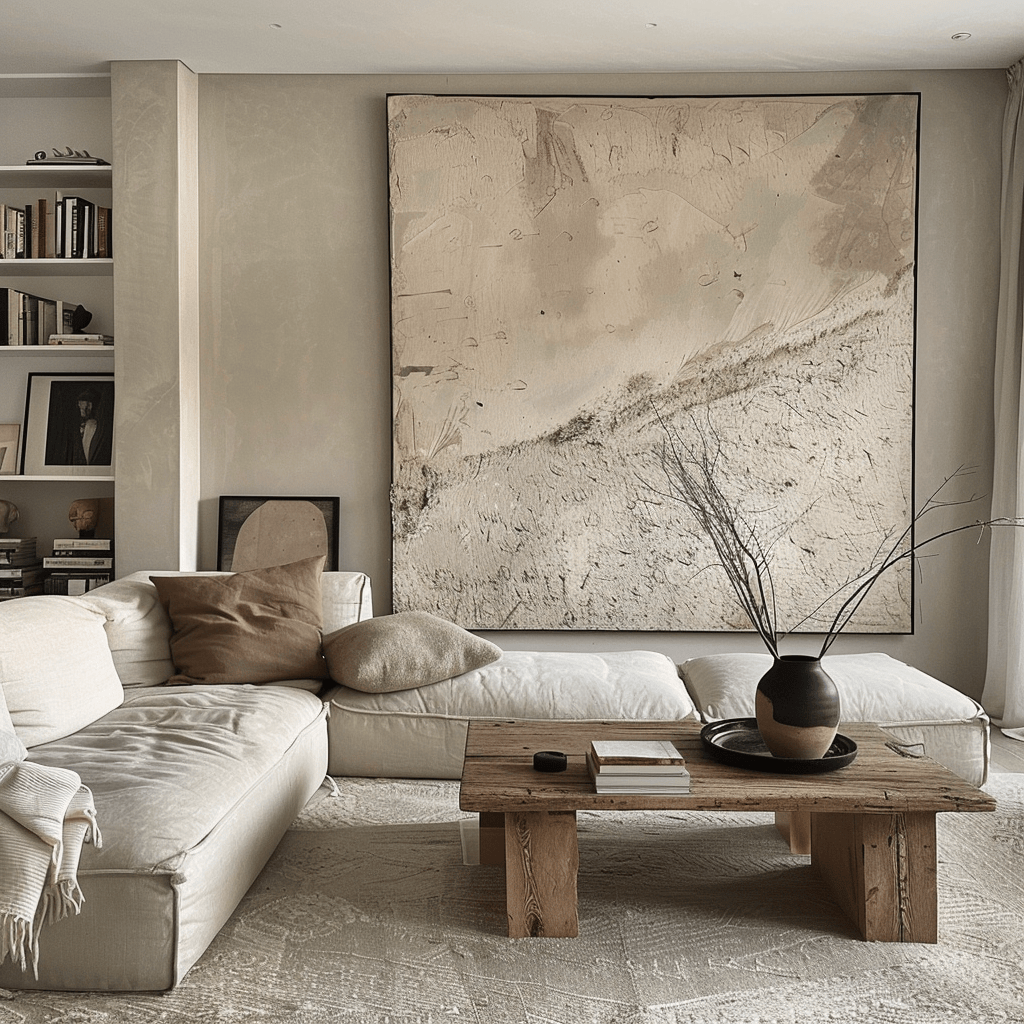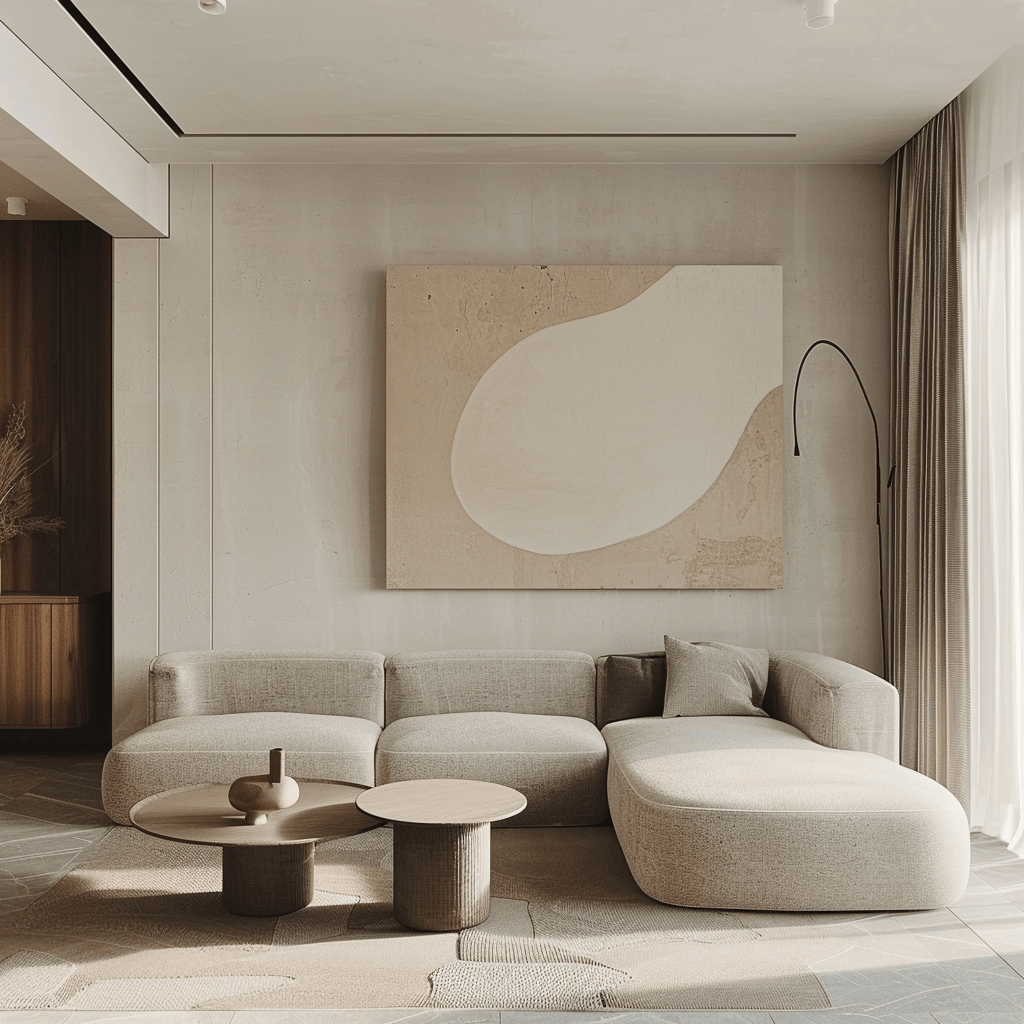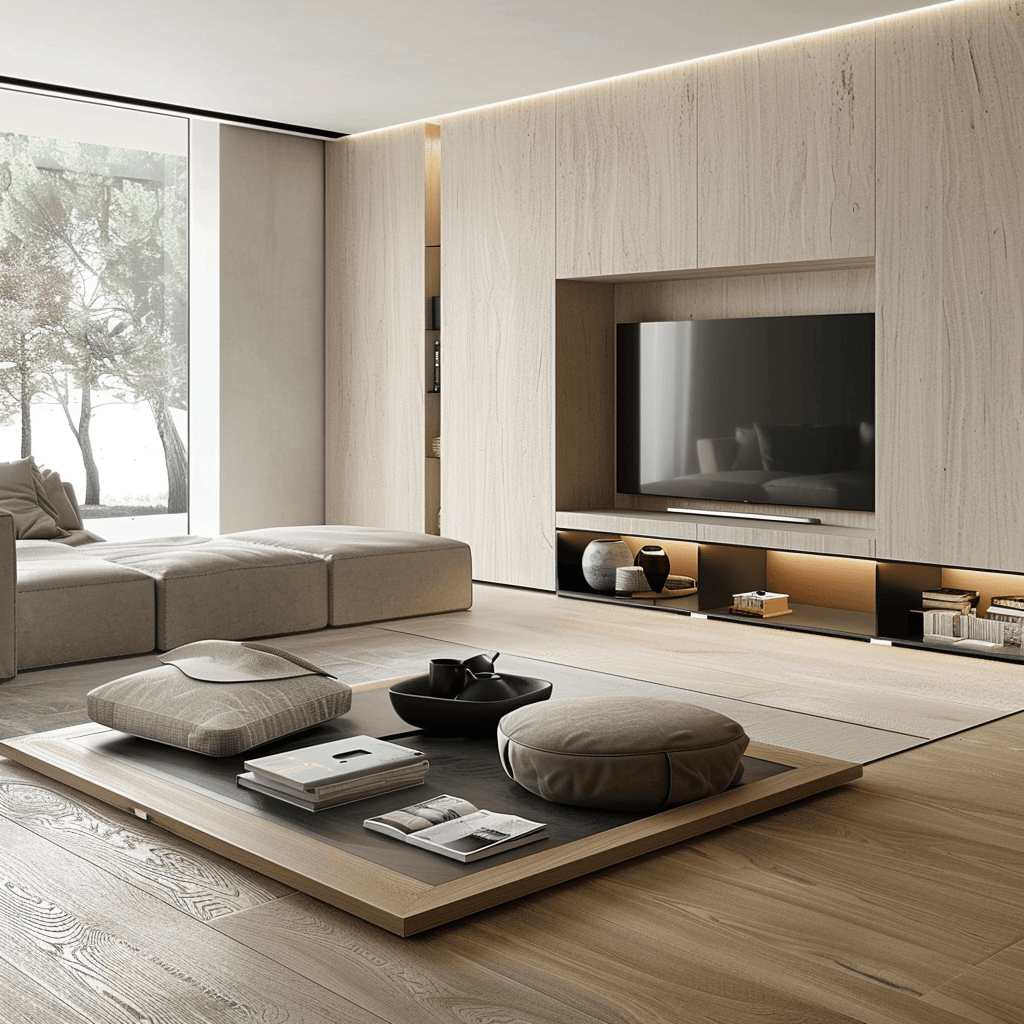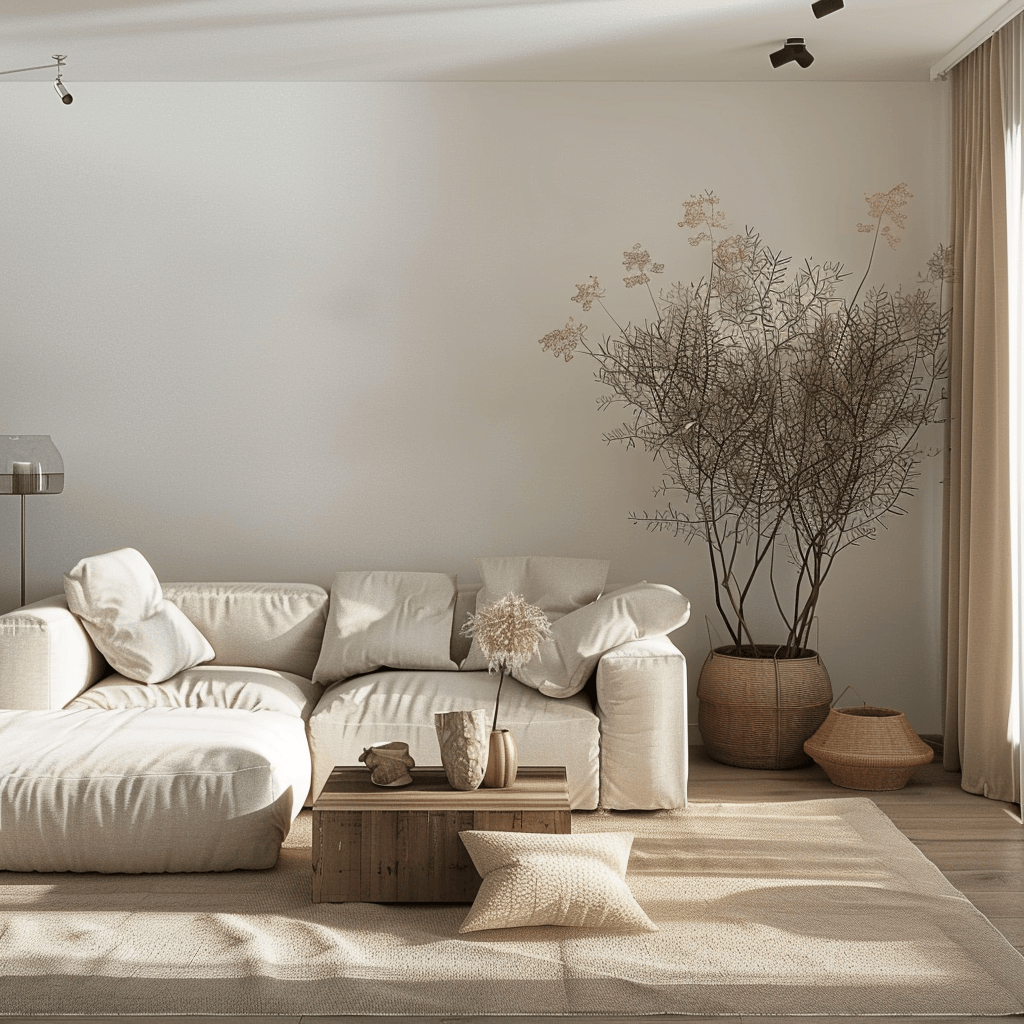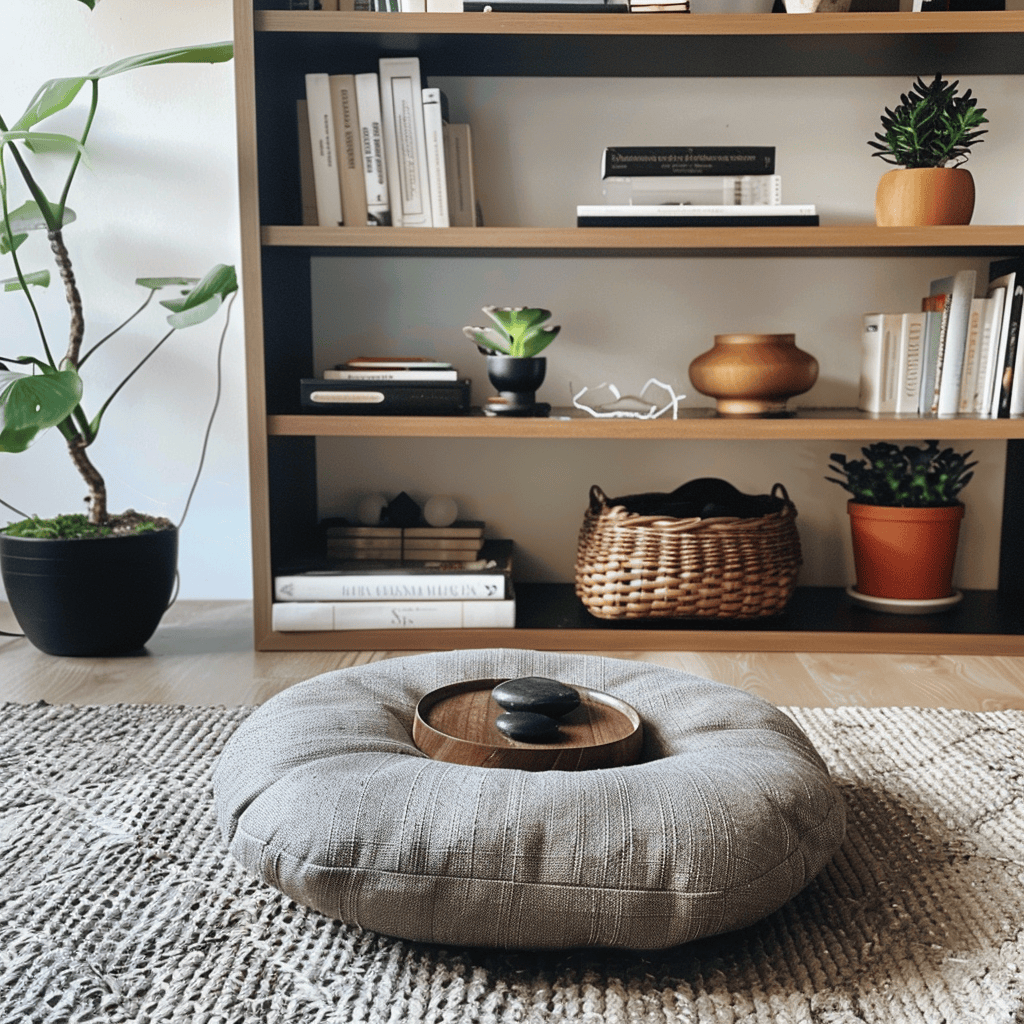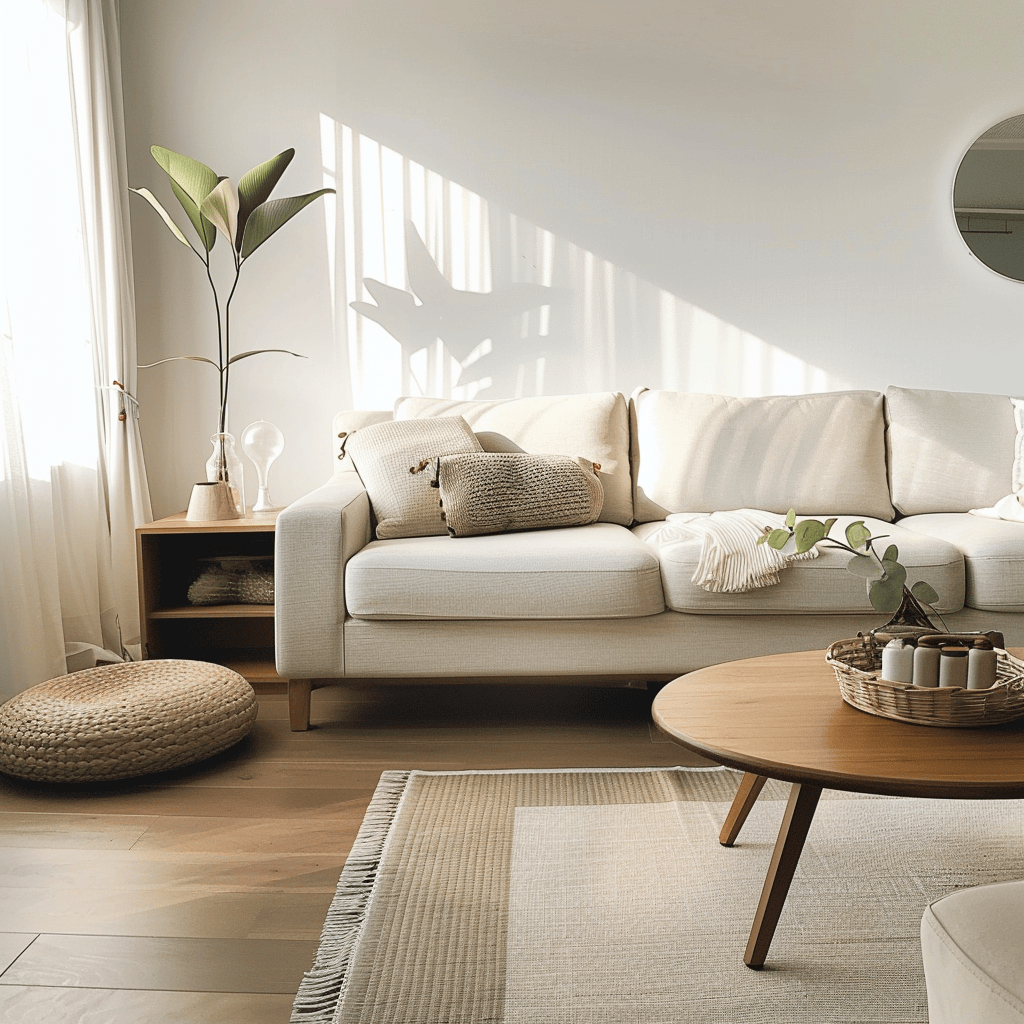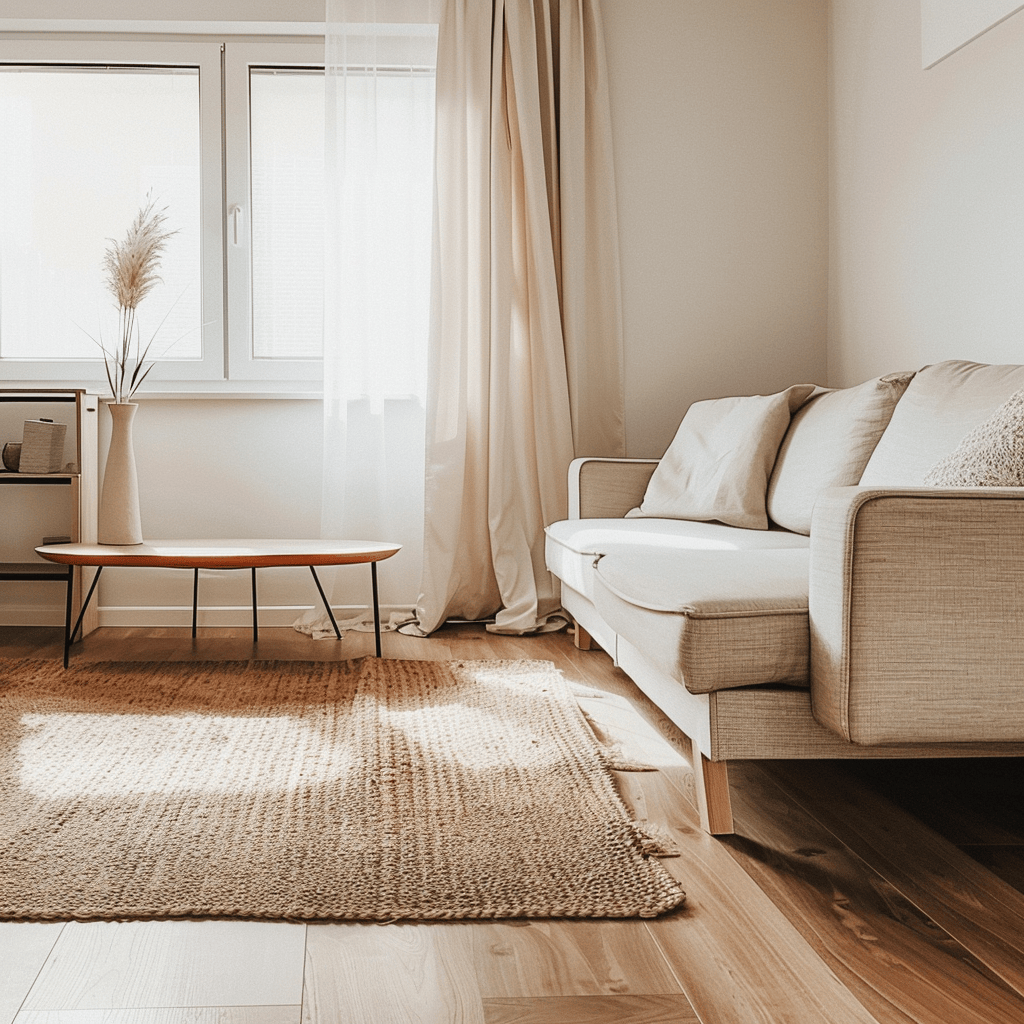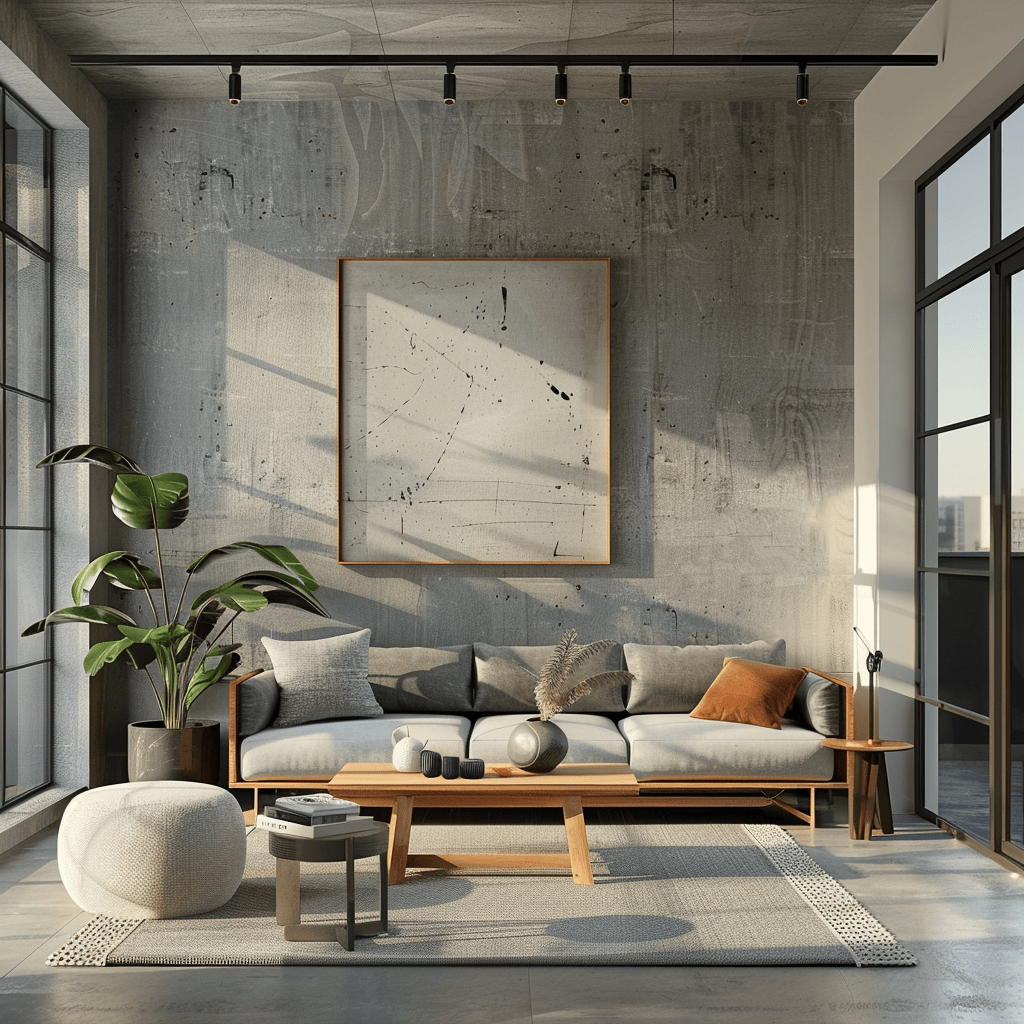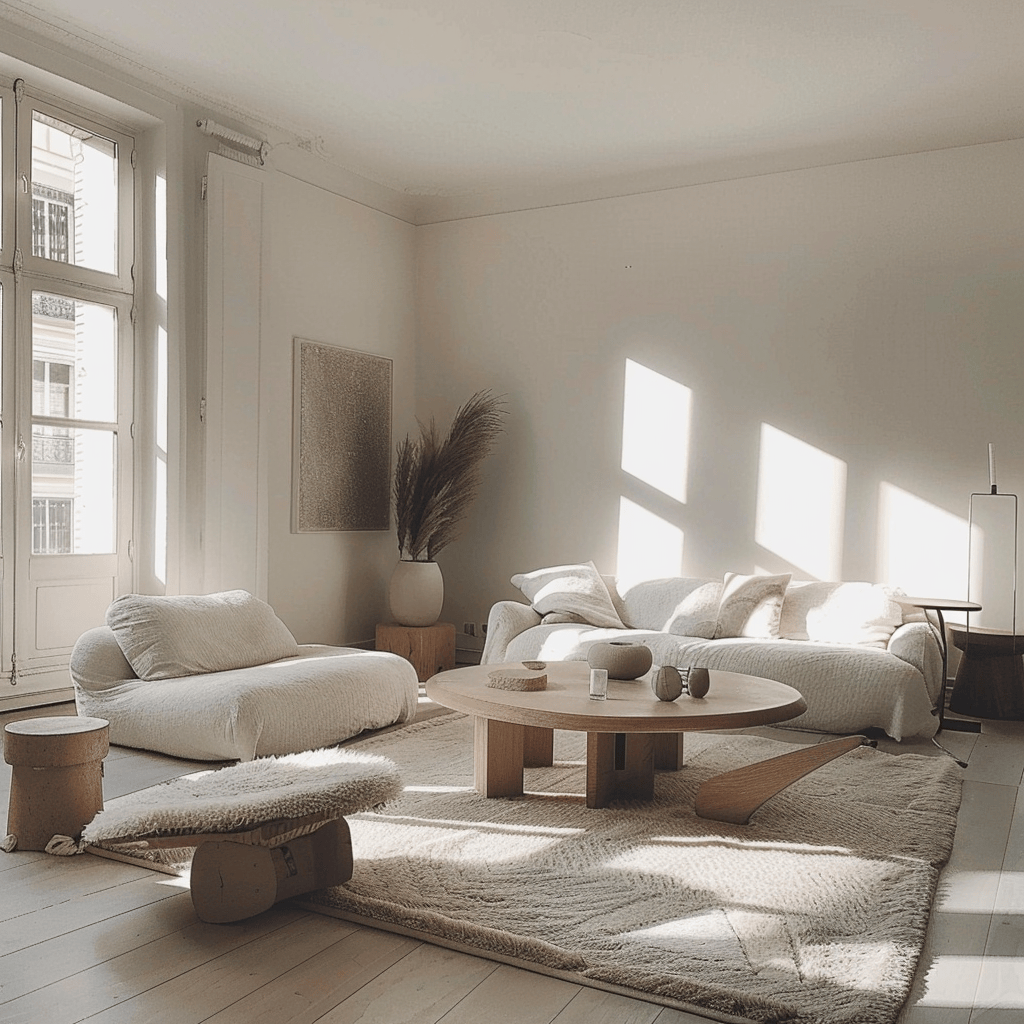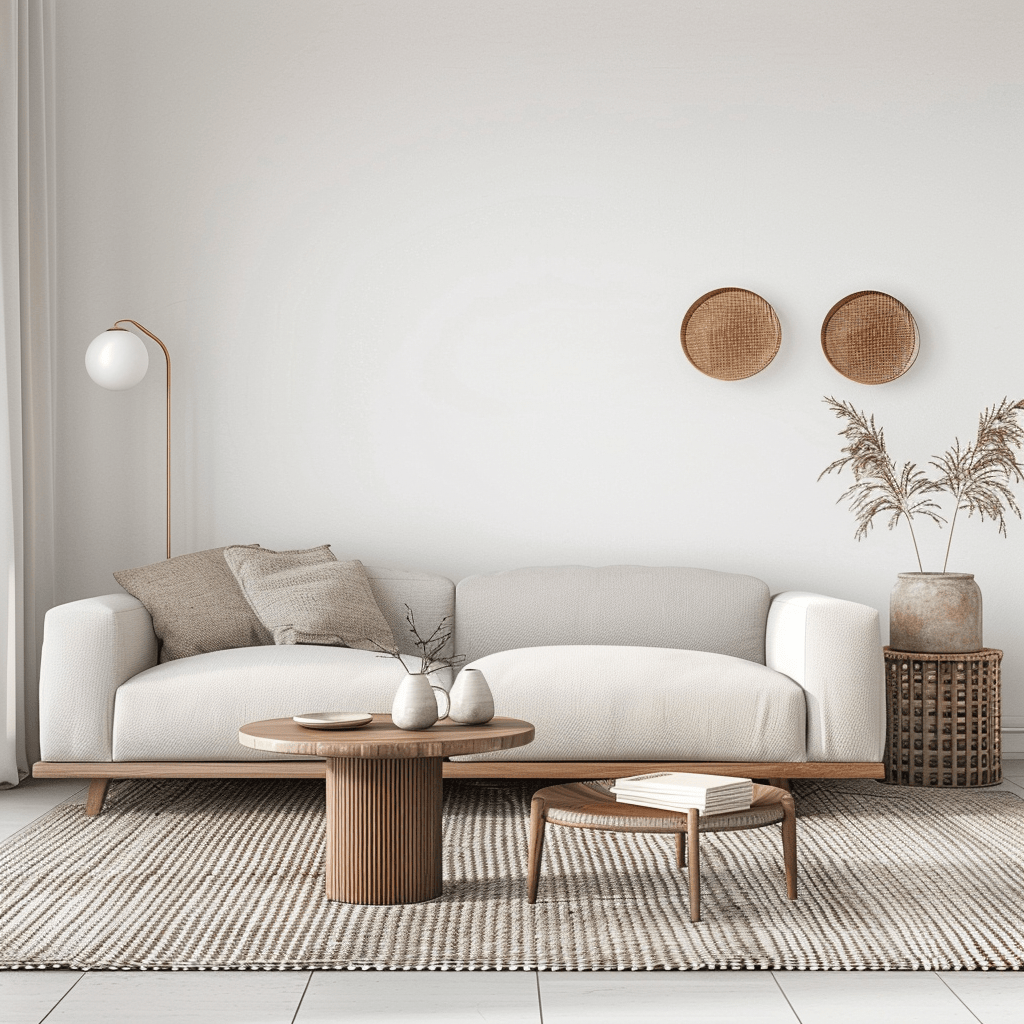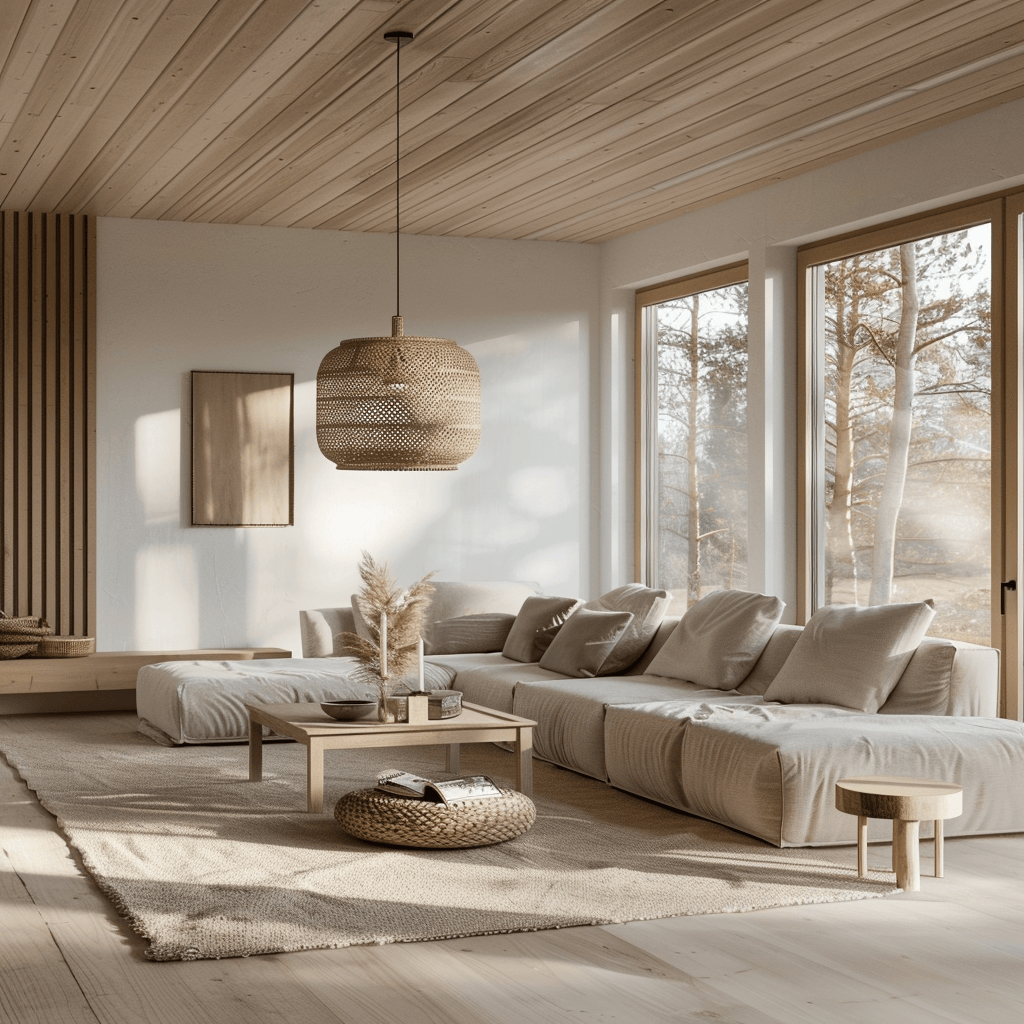How To Create A Minimalist Living Room
By Alan George
Imagine walking into your living room and feeling an instant sense of peace and tranquility wash over you. Picture a space that's free from clutter and distractions, where every carefully chosen piece of furniture and decor serves a purpose and brings you joy. That's the magic of a minimalist living room – it's not just about having less stuff, but about creating a sanctuary that reflects your unique style and supports your well being.
1/34
The Essence of Minimalism
Minimalism in interior design is a philosophy that prioritizes simplicity, functionality, and the use of essential elements to create a clean, uncluttered, and visually appealing space. By reducing a room to its most basic components and leaving only what is necessary and meaningful, minimalism creates a peaceful and inviting environment that promotes relaxation and well being.
2/34
Defining Minimalism in Interior Design
Minimalism in interior design is a philosophy that emphasizes simplicity, functionality, and the use of essential elements to create a clean, uncluttered, and visually appealing space. It involves reducing a room to its most basic components, leaving only what is necessary and meaningful.
3/34
The Benefits of a Minimalist Living Room
A minimalist living room offers numerous benefits, such as increased space, reduced stress, easier maintenance, and a timeless aesthetic. By decluttering and simplifying your living area, you create a peaceful and inviting environment that promotes relaxation and well being.
4/34
Crafting the Perfect Minimalist Color Palette
A minimalist color palette is centered around neutral tones, such as white, beige, gray, and black, which form the foundation of the design. These colors create a sense of calm and serve as a blank canvas, allowing other design elements to stand out. While neutral tones dominate, incorporating accent colors can add depth and visual interest to your living room.
5/34
The Power of Neutral Tones
Neutral tones, such as white, beige, gray, and black, form the foundation of a minimalist color palette. These colors create a sense of calm and serve as a blank canvas, allowing other design elements to stand out. Neutral tones also contribute to a sense of spaciousness and light.
6/34
Incorporating Accent Colors for Visual Interest
While neutral tones dominate minimalist design, incorporating accent colors can add depth and visual interest to your living room. Choose one or two accent colors that complement your neutral base, such as soft pastels or rich jewel tones, and use them sparingly in accessories, artwork, or a single statement piece of furniture.
7/34
Streamlined Furniture Selection
In a minimalist living room, furniture selection is focused on choosing essential pieces that serve specific purposes and contribute to the overall functionality of the space. Opting for furniture with clean lines and simple silhouettes creates a sense of visual harmony and allows the beauty of each piece to shine through.
8/34
Choosing Essential Pieces for Functionality
In a minimalist living room, each piece of furniture should serve a specific purpose and contribute to the overall functionality of the space. Select a comfortable sofa, a practical coffee table, and perhaps an armchair or two for seating. Avoid excessive furniture that clutters the room and detracts from the minimalist aesthetic.
9/34
Opting for Clean Lines and Simple Silhouettes
Minimalist furniture is characterized by clean lines, simple silhouettes, and a lack of ornate details. Choose pieces with smooth surfaces, straight edges, and minimal embellishments. This streamlined approach creates a sense of visual harmony and allows the beauty of each piece to shine through.
10/34
Maximizing Space with Minimalist Design
Minimalist design focuses on creating an open and airy atmosphere that maximizes the feeling of space within a living room. By reducing the number of furniture pieces, leaving ample open floor space, and utilizing multifunctional furniture, minimalism helps to reduce clutter and create a spacious environment.
11/34
Creating an Open and Airy Atmosphere
One of the key goals of minimalist design is to create an open and airy atmosphere that maximizes the feeling of space. This can be achieved by reducing the number of furniture pieces, leaving ample open floor space, and ensuring a clear line of sight throughout the room.
12/34
Utilizing Multifunctional Furniture to Reduce Clutter
Multifunctional furniture is an excellent solution for minimalist living rooms, as it helps reduce clutter and maximizes the use of available space. Consider incorporating pieces such as ottomans with hidden storage, a coffee table that doubles as a workspace, or a sofa bed for occasional guests.
13/34
Lighting in a Minimalist Living Room
Lighting plays a crucial role in minimalist living room design, with an emphasis on maximizing natural light and selecting sleek, modern lighting fixtures. The use of natural light enhances the sense of openness and airiness, while simple, geometric light fixtures complement the minimalist aesthetic.
14/34
The Role of Natural Light in Minimalist Design
Natural light plays a crucial role in minimalist design, as it enhances the sense of openness and airiness in a room. Maximize the use of natural light by keeping windows unobstructed and using sheer or lightweight window treatments that allow light to filter through.
15/34
Selecting Sleek and Modern Lighting Fixtures
When it comes to artificial lighting, opt for sleek and modern fixtures that complement the minimalist aesthetic. Choose simple, geometric shapes and finishes such as chrome, brushed nickel, or matte black. Avoid ornate or overly decorative lighting fixtures that can disrupt the clean lines of the space.
16/34
Minimalist Textures and Materials
Incorporating natural and organic elements, as well as subtle textures, into a minimalist living room adds warmth, depth, and character without compromising the simplicity of the design. These elements create visual interest and a sense of comfort within the space.
17/34
Embracing Natural and Organic Elements
Incorporating natural and organic elements into your minimalist living room adds warmth and texture without compromising the simplicity of the design. Consider using materials such as wood, stone, or natural fibers like cotton, linen, or wool for a touch of softness and depth.
18/34
Incorporating Subtle Textures for Depth and Character
While minimalist design favors smooth surfaces and clean lines, incorporating subtle textures can add visual interest and character to your living room. Introduce texture through the use of a plush area rug, a knitted throw blanket, or a piece of art with a three dimensional quality.
19/34
Decorating with Intention
In a minimalist living room, decorative elements should be carefully curated and hold personal significance. Practicing restraint in the use of accessories and selecting meaningful artwork helps to create a space that reflects your personality without compromising the minimalist aesthetic.
20/34
Curating Meaningful Artwork and Accessories
In a minimalist living room, each decorative element should be carefully curated and hold personal significance. Select a few meaningful pieces of artwork, such as a single large scale painting or a small collection of photographs, to add personality and visual interest to the space.
21/34
Practicing Restraint in Decorative Elements
Minimalist design calls for restraint in the use of decorative elements. Avoid overcrowding surfaces with knick knacks and instead opt for a few carefully chosen accessories that serve a purpose or hold sentimental value. Remember, less is often more in a minimalist space.
22/34
Minimalist Storage Solutions
Maintaining a clutter-free living room is essential to achieving a minimalist aesthetic. Implementing clever storage solutions and integrating hidden storage into your design helps to keep the space organized and visually appealing.
23/34
Clever Ways to Keep Your Living Room Clutter Free
Maintaining a clutter free living room is essential to achieving a minimalist aesthetic. Implement clever storage solutions, such as built in shelving, hidden storage ottomans, or a storage coffee table, to keep items organized and out of sight.
24/34
Integrating Hidden Storage into Your Design
When selecting furniture for your minimalist living room, look for pieces that offer hidden storage options. A TV stand with drawers, a sideboard with cabinets, or a bookshelf with integrated storage boxes can help keep your space tidy and streamlined.
25/34
The Zen of Minimalist Living
A minimalist living room should evoke a sense of serenity and calm, promoting mindfulness and simplicity in daily life. By creating a peaceful and harmonious space, minimalism nurtures your well being and encourages relaxation and reflection.
26/34
Creating a Serene and Calming Atmosphere
A minimalist living room should evoke a sense of serenity and calm. Achieve this by maintaining a clutter free environment, using a soft and neutral color palette, and incorporating elements of nature, such as plants or natural materials, to create a peaceful and harmonious space.
27/34
Incorporating Elements of Mindfulness and Simplicity
Minimalist design encourages mindfulness and simplicity in daily life. Consider incorporating elements that promote relaxation and reflection, such as a comfortable meditation cushion, a small water feature, or a collection of inspiring books, to create a space that nurtures your well being.
28/34
Maintaining a Minimalist Living Room
Maintaining a minimalist living room requires developing habits that support a clutter-free environment and regularly assessing and editing your belongings. By establishing a regular cleaning and tidying routine and being willing to let go of items that no longer fit your minimalist vision, you can sustain a peaceful and organized space.
29/34
Developing Habits to Keep Your Space Tidy
Maintaining a minimalist living room requires developing habits that support a clutter-free environment. Establish a regular cleaning and tidying routine, and make a habit of putting items back in their designated places after use. Encourage family members to adopt these habits as well.
30/34
Regularly Assessing and Editing Your Belongings
To maintain a minimalist living space, regularly assess your belongings and edit them as needed. Periodically review the items in your living room and ask yourself if each piece serves a purpose or brings you joy. Be willing to let go of items that no longer fit your minimalist vision.
31/34
Minimalist Living Room Inspiration
Drawing inspiration from real life examples of stunning minimalist spaces can help you visualize and plan your own minimalist living room. While minimalist design has certain guidelines, it's essential to adapt these principles to your personal style and needs, creating a space that feels authentic and comfortable to you.
32/34
Stunning Minimalist Spaces
Draw inspiration from these examples of beautiful minimalist living rooms. Look for images online or in design magazines that showcase the principles of minimalist design, such as clean lines, neutral colors, and functional furniture arrangements.
33/34
Adapting Minimalist Principles to Your Personal Style
While minimalist design has certain guidelines, it's essential to adapt these principles to your personal style and needs. Infuse your living room with elements that reflect your personality and create a space that feels authentic and comfortable to you. Remember, minimalism is not about deprivation, but rather about creating a purposeful and meaningful living environment.
34/34


